Monitor arm technology has revolutionized how we work at our desks. Gone are the days of neck strain and cluttered workspaces. Your computer screen doesn’t have to sit in one boring position anymore. Think about it, you adjust your car seat, your office chair, even your pillow at night. Why wouldn’t you adjust your monitor for maximum comfort?
This game-changing desk accessory solves problems you did not even know you had. Whether you are working from home, managing a corporate office, or gaming for hours, the right setup makes all the difference.
Why a Monitor Arm Is a Must-Have in 2025

The Remote Work Revolution Changes Everything
Remote work is not going anywhere. Statistics show that 42% of the US workforce now works from home full-time. That’s millions of people spending 8+ hours daily staring at screens in less-than-perfect setups.
Your kitchen table was not designed for professional work. Neither was that old wooden desk from college. These makeshift offices create serious health problems that compound over time.
Healthcare costs from poor posture have skyrocketed. Physical therapy visits, chiropractor appointments, and prescription pain medications add up quickly. Prevention costs far less than treatment.
Technology Demands Better Positioning
Modern monitors are bigger, heavier, and more demanding than ever. Ultra-wide displays measuring 34 inches need precise positioning to work effectively. You can’t just plop them on a basic stand and hope for the best.
4K resolution screens require specific viewing distances for optimal clarity. Too close, and you’ll strain your eyes. Too far, and you lose the detailed benefits you paid for.
Multiple monitor setups have become standard in many professions. Traders, designers, and programmers regularly use two, three, or even four screens simultaneously. Traditional stands can’t accommodate this efficiently.
Health Crisis in Modern Workspaces
“Tech neck” affects 60% of office workers, according to recent studies. This condition didn’t exist 30 years ago. It’s entirely preventable with proper screen positioning.
Eye strain complaints increased by 35% since 2020. Digital eye strain causes headaches, dry eyes, and difficulty focusing. The solution isn’t expensive eye drops or special glasses – it’s positioning your screen correctly.
Carpal tunnel syndrome prevention starts with proper alignment. When your monitor sits too low, you compensate by hunching forward. This posture affects your entire upper body, including your wrists and hands.
Best Monitor Arms for Every Workspace
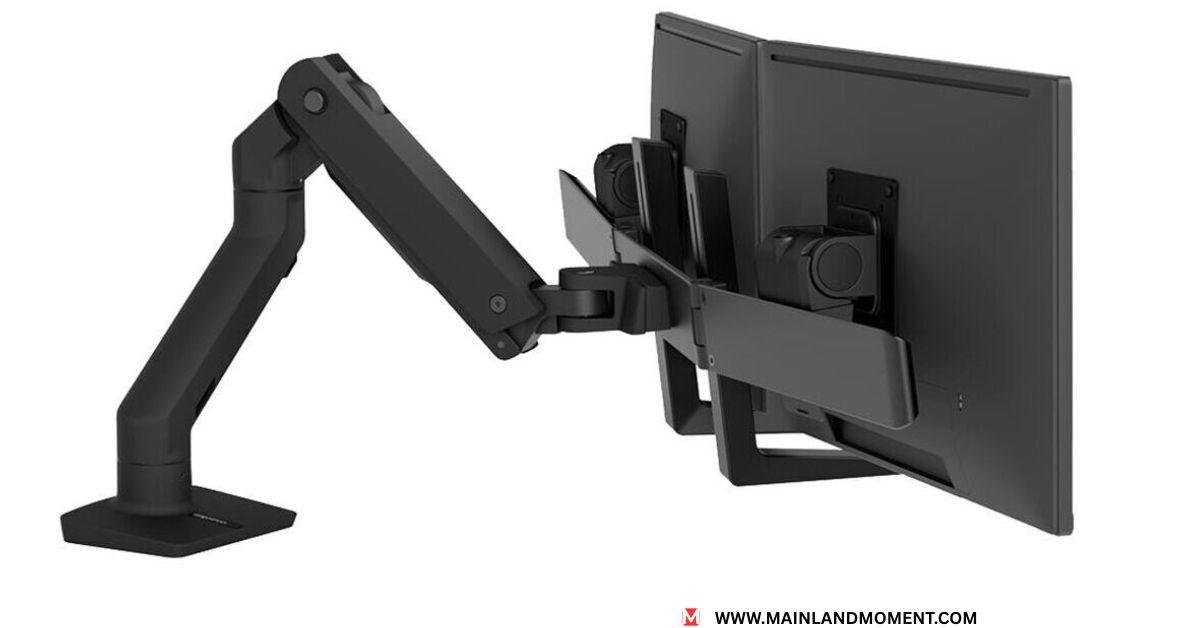
Single Monitor Stand Solutions

Budget-friendly options start around $30 and deliver surprising value. The VIVO STAND-V001 supports monitors up to 32 inches and weighs less than 22 pounds. It’s a simple mechanical adjustment system that works reliably for years.
Mid-range performers like the HUANUO adjustable monitor arm offer gas spring technology for $89. This mechanism allows effortless repositioning throughout the day. You can adjust height, tilt, and rotation with minimal effort.
Premium options include the Herman Miller Ollin, engineered for professional environments. At $245, it supports monitors up to 30 pounds with whisper-quiet adjustments. The build quality justifies the investment for daily heavy use.
Dual Monitor Arm Configurations
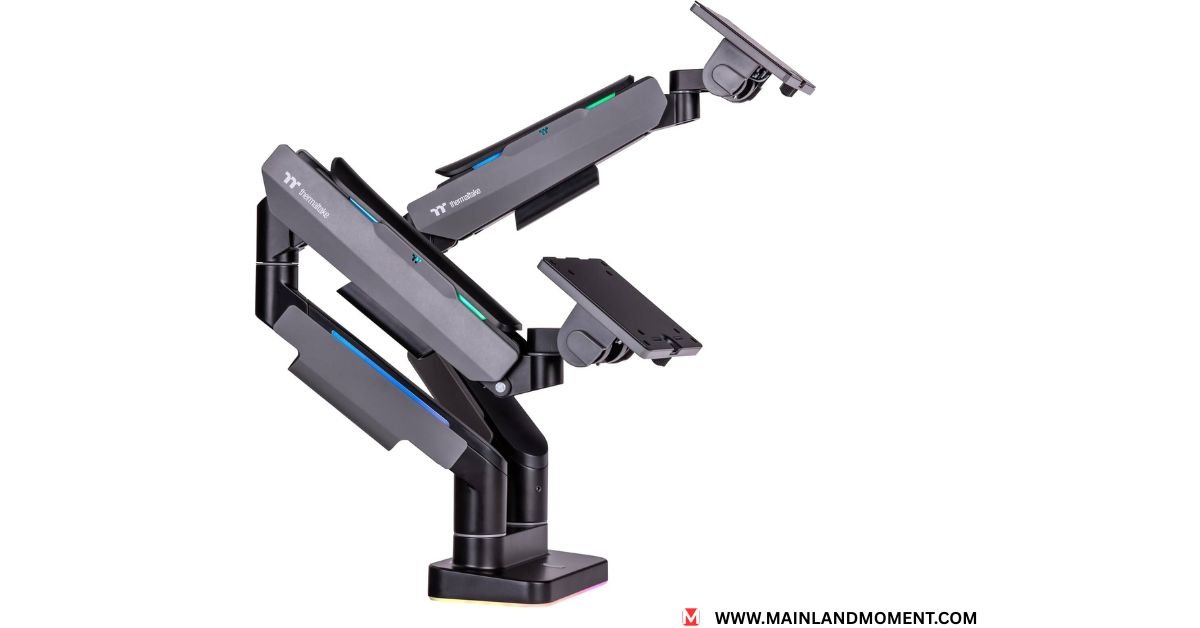
Side-by-side arrangements work best for most applications. This setup mimics natural peripheral vision and reduces head movement between screens.
Weight distribution becomes critical with dual setups. Each arm must handle its load independently while maintaining balance. Look for models with individual adjustment controls for each monitor.
Cable management integration prevents the spaghetti mess that dual monitors typically create. Quality dual arms include built-in routing channels and clips.
Heavy-Duty Options for Large Displays
Gas spring monitor arms excel with displays weighing 15-35 pounds. The counterbalance system eliminates the effort needed for adjustments while providing rock-solid stability.
Gaming setups often require heavy-duty monitor arms capable of supporting curved ultrawide displays. These monsters can weigh 40+ pounds and measure 49 inches diagonally.
Top Benefits of Using a Monitor Arm Daily
Immediate Physical Relief You Will Feel
Proper monitor positioning reduces neck flexion by an average of 23 degrees. This seemingly small change eliminates the forward head posture that causes so much discomfort.
Shoulder blade tension disappears when you stop reaching forward to see your screen. Your shoulders naturally fall into their proper position.
Eye movement fatigue decreases significantly. Instead of constantly looking up and down, your eyes operate in their natural horizontal plane.
Productivity Enhancements That Surprise Everyone
Studies show a 12% increase in task completion speed with optimal monitor positioning. That’s nearly an extra hour of productive work in an 8-hour day.
Seamless monitor switching becomes possible with articulating arms. You can rotate screens for presentations, adjust height for different tasks, or tilt displays to reduce glare.
Multi-tasking efficiency improves dramatically. Glances between documents, spreadsheets, and communication tools happen naturally without strain.
Workspace Transformation Beyond Recognition
A quality monitor arm desk mount reclaims 40% more usable desk surface. Suddenly, you have room for notebooks, coffee, and actual work materials.
Cable management with monitor arm systems creates a clean, professional appearance. Visitors notice organized workspaces and assume you’re equally organized professionally.
Flexible seating arrangements become possible. You can easily adjust the monitor position when switching between sitting and standing, or when someone else uses your workspace.
How to Pick the Perfect Ergonomic Monitor Mount
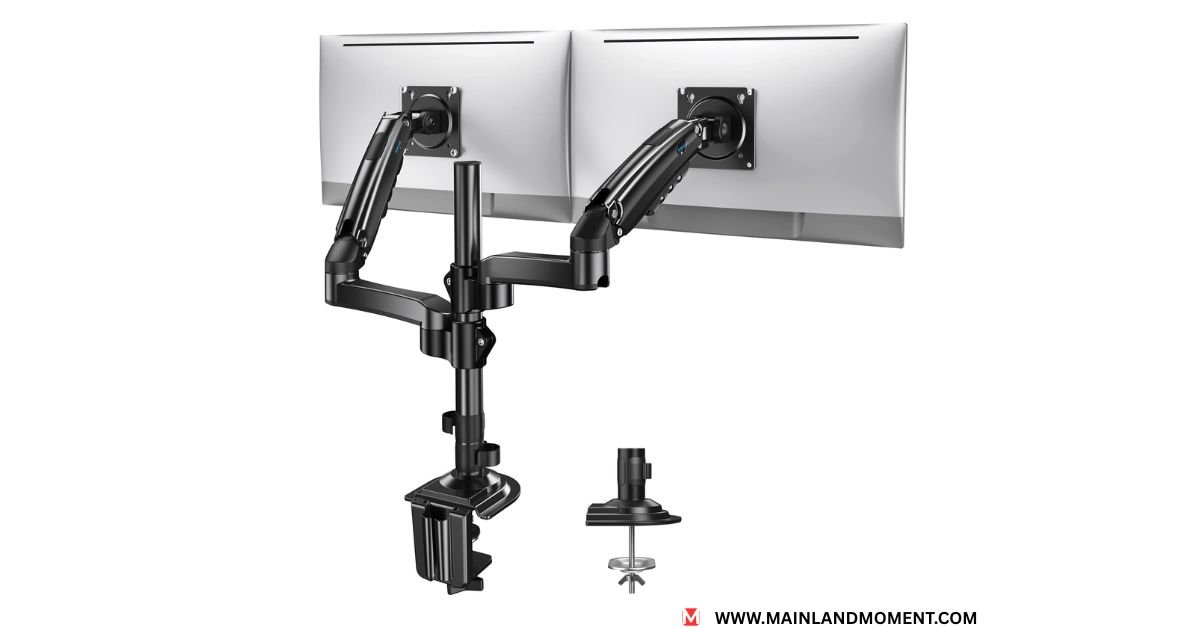
Critical Compatibility Factors You Must Check
VESA monitor arm compatibility determines everything. Most monitors use either 75x75mm or 100x100mm mounting patterns. Measure yours before shopping.
Weight specifications matter more than you think. Your monitor’s weight must fall well within the arm’s capacity. Leave a 20% safety margin for long-term reliability.
Desk thickness requirements vary by model. Most monitor arm clamps accommodate desks between 0.8 and 4 inches thick. Measure your desk edge carefully.
Adjustment Mechanisms Deep Dive
Gas spring technology provides effortless positioning with smooth, controlled movement. These systems require minimal maintenance and last for years.
Mechanical systems offer precise control and unlimited positioning options. They’re more affordable but require more effort to adjust.
Screen position adjustment range varies significantly between models. Look for:
- Tilt range: -90° to +85° for maximum flexibility
- Swivel capabilities: Full 360° rotation for presentations
- Height adjustment: 12+ inches of vertical travel
READ ALSO: Best Gaming Monitors 2025: Top Picks to Win
Essential Features That Matter
Built-in cable management prevents clutter and maintains clean aesthetics. Look for arms with integrated routing channels.
Quick-release mechanisms allow easy monitor removal for cleaning or replacement. This feature saves significant time during maintenance.
Workstation ergonomics improve with arms offering multiple adjustment points. The more flexibility, the better you can customize positioning.
Monitor Arm Setup: Do's and Don'ts
Pre-Installation Checklist for Success
Assess your desk stability before mounting anything. Wobbly desks can’t support monitor arms safely. Reinforce if necessary.
Verify VESA compatibility one final time. Double-check your monitor’s manual for exact specifications.
Gather proper tools: hex keys, screwdrivers, and a level. Having everything ready prevents frustration during installation.
Step-by-Step Installation Guide
Monitor arm clamp installation requires careful positioning. Place the clamp where it won’t interfere with drawers or knee space.
Grommet mounting provides the cleanest look but requires drilling a hole in your desk. Use the provided template for precise placement.
How to mount a monitor arm properly involves these key steps:
- Attach the base securely to your desk
- Connect the arm assembly to the base
- Mount your monitor to the VESA plate
- Attach the loaded plate to the arm
- Adjust positioning and tighten all connections
Critical Mistakes to Avoid
Never exceed weight limits, even temporarily. Overloading causes premature wear and potential failure.
Avoid over-tightening screws. This can strip threads or crack mounting holes in your monitor.
Don’t skip desk reinforcement when needed. Better safe than sorry with expensive equipment.
Monitor height adjuster positioning shouldn’t be too high. The top of your screen should align with or sit slightly below eye level.
Is a Monitor Arm Worth It? Let's Find Out
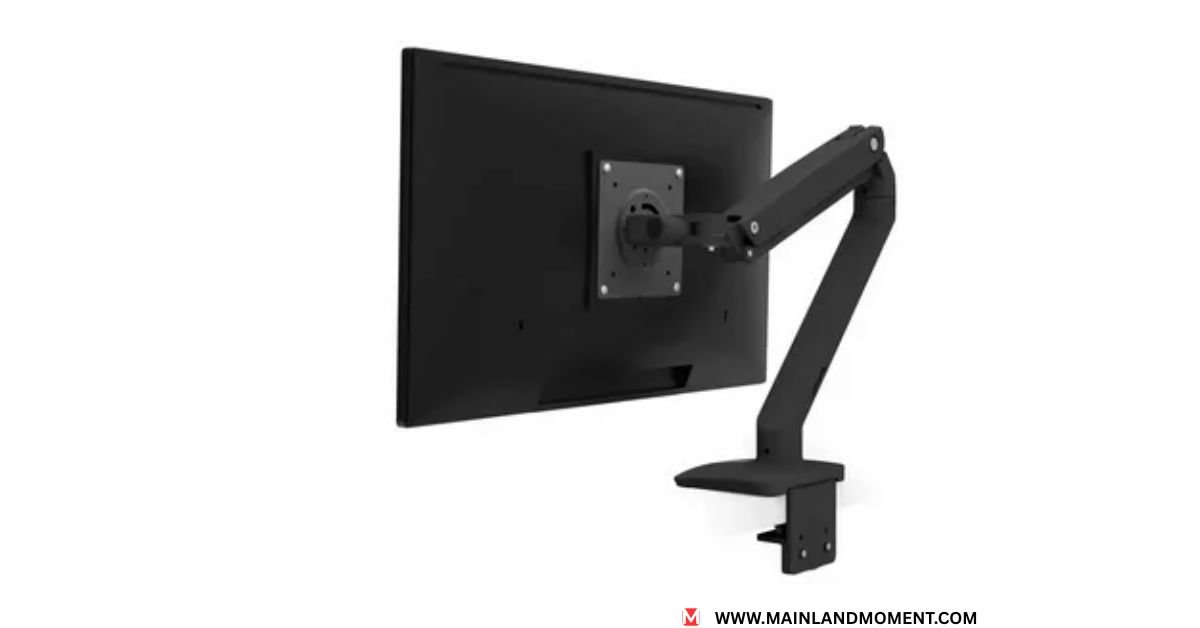
Real-World Cost Analysis
Initial investment ranges from $50 to-250, depending on features and quality. This one-time expense pays dividends immediately.
Productivity gains worth $500+ annually come from improved comfort and efficiency. Less fatigue means more consistent output throughout the day.
Healthcare savings of $200-1000 yearly result from preventing repetitive strain injuries. Physical therapy sessions cost $100+ each.
Scientific Backing You Can Trust
Cornell University ergonomic studies prove that proper monitor positioning reduces musculoskeletal disorders by 40%.
Office monitor setup optimization shows measurable improvements in worker satisfaction and retention rates.
Medical journals document the connection between screen positioning and long-term health outcomes.
The Verdict Framework
Best monitor arms for productivity benefit knowledge workers, gamers, and creative professionals the most. If you spend 4+ hours daily at a computer, the investment makes sense.
Situations where arms aren’t necessary include temporary workstations, shared computers, or extremely limited budgets.
ROI timeline typically ranges from 3-6 months through improved productivity and reduced discomfort.
READ MORE ABOUT: VIVO Single Monitor Arm Desk Mount Stand – Fully Adjustable
Space-Saving Desk Accessories Transform Your Office
Modern space-saving desk accessories work together to create efficient workspaces. A quality monitor riser arm becomes the foundation for an organization.
Desk monitor support systems free up valuable real estate for essential items. You’ll wonder how you worked in such cramped conditions before.
Computer screen arm positioning allows creative desk layouts previously impossible with traditional stands.
Conclusion
Monitor arm technology represents one of the smartest investments you can make for your workspace. The combination of ergonomic benefits, productivity improvements, and space optimization creates immediate and long-term value.
Don’t let another day pass with poor monitor positioning affecting your health and efficiency. Your neck, shoulders, and productivity levels will thank you for making this simple but impactful upgrade.
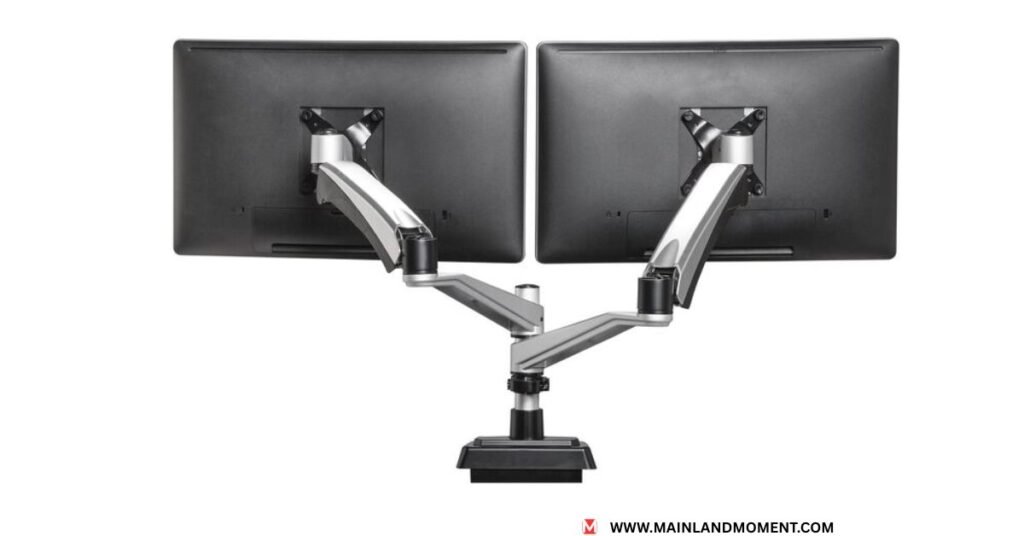


Pingback: How To Clear Cookies On Any Browser For Better Privacy And Speed - The Mainland Moment
Pingback: Best Voice-to-Text Tools In 2025: Type Faster, Work Smarter - The Mainland Moment
Pingback: Top 10 Portable Monitors For Laptops: Work & Play On-the-Go
Pingback: Top 10 LED Strip Lights To Brighten Your Room Aesthetically